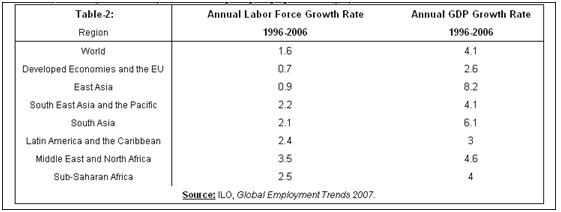Labor Market Influence (supplier)
Description
Labor markets function through the interaction of workers and employers. Traditionally, labor markets have been thought to be perfectly competitive. That is, there are many workers and employers having perfect information and there are no transaction costs. The competitive framework leads to clear conclusions - workers earn their marginal product of labor.
As the supply of human resource, development of labor market is much relevant to development the future office. Align with the growth of population, development of labor market will provide higher education, professional skill and working experience to meet the need of job competition and capable with future office position. Also the globalization trend results the diversification of labor market to support the cross-culture and cross-country cooperation within and outside of the office.
Enablers
- Popularization of compulsory education;
- Lower doorsill of higher education;
- Study and work abroad experience align with the cross-culture and globalization;
- Flexibility of working time and wage;
- Geographical and job mobility;
- Laws and disciplines set up by countries and organizations to protect the labor force.
Inhibitor
- Information asymmetry between demand and supply;
- Mismatch between the skills and other attributes of the labor force and those demanded; by employers;
- Insufficient demand in the overall economy result from economy recession;
- Strike and protest emotion;
- Iniquity competition and bias as disabled, sex ("ice ceiling") and religion;
- Child labor and aging population.
Paradigms
- Keynesian economics
- Neoclassical microeconomics
- The Labour Supply curve
- A Firm's Labour Demand in the Short Run Model
- Equilibrium
- Consumer Services
- Retail Trade (NAICS 44 and 45)
- Accommodation and Food Services (NAICS 72)
Experts
- Peter A. Diamond
- Dale T. Mortensen
- Christopher A. Pissarides
Timing
Reference
http://en.wikipedia.org/wiki/Labor_market
http://www.law.harvard.edu/programs/lwp/LWPclmp.html
